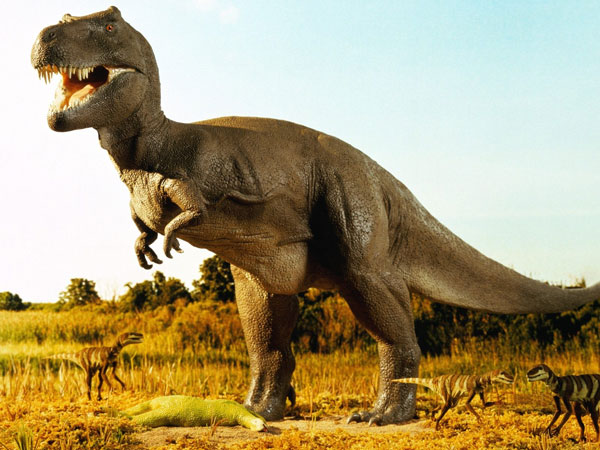Signs that dinosaurs are warm-blooded animals
According to a study by a team of scientists from Spain and Norway, published in the June 27 issue of Nature, dinosaurs are most likely hot-blooded animals.
This finding eliminated the eloquent scientific argument so far that the extinct giant is cold-blooded.
The researchers say they have studied mammalian bone tissue and found plant growth rings on their bones, a trait that is limited to blood animals. cold up to this point.
These features also show on dinosaur bone tissue, suggesting that dinosaurs may have a high metabolic rate that allows rapid growth and this is a characteristic sign of warm-blooded animals.

Previous scientists have also discovered that, due to the huge body size and the consumption of a huge amount of food, dinosaurs are capable of producing huge amounts of energy that radiate into the environment.
Somehow they could not explain, these large dinosaurs reduced their body temperature by 4-7 degrees Celsius. Their body temperature existed at a temperature of 36-38 degrees Celsius, complete. It's the same as the body heat of warm-blooded animals.
While reptiles today belong to cold-blooded animals, they cannot control their body temperature through their metabolic system but must rely on external factors such as magnetic temperature. sunshine.
Mr. Meike Koehler from Spain's Catala de Paleontologia Institute affirmed that the results they gathered were clear evidence that dinosaurs are warm-blooded and suggest a reconsideration of reptiles.
For a long time, paleontologists have always focused on the ring-shaped markings on the bones of dinosaurs and cold-blooded animals, based on that to indicate the growth pause, probably due to climate. cold or lack of food.
Koehler and her team have discovered the upper bone ring in all 41 hot-blooded animals they studied, including antelopes, deer and giraffes. When comparing the bone tissue of these warm-blooded animals with the bone tissue of dinosaurs, there seems to be no difference.
Results of dinosaur bone tissue analysis also showed that the rapid growth of mammals is related to high metabolism, a typical feature of warm-blooded animals.
The findings of scientists from Spain and Norway are considered the latest and most fundamental evidence that dinosaurs are hot-blooded.
- New hypothesis about dinosaurs
- Decipher the mystery of the dinosaur's blood
- The dinosaurs also have warm blood
- New discovery: Dinosaurs are not cold-blooded!
- Dinosaurs are hot-blooded and active
- What is cold-blooded animals? Basic information you need to know
- Found blood cells in dinosaur fossil foundations of 75 million years
- What would happen if humans were ... 'cold-blooded animals'?
- Cold-blooded animals are able to adapt quickly to climate change
- Watch out for deadly parasite infections from cats
- Sweating: Normal or pathological?
- Cold-blooded creature
 'Fine laughs' - Scary and painful torture in ancient times
'Fine laughs' - Scary and painful torture in ancient times The sequence of numbers 142857 of the Egyptian pyramids is known as the strangest number in the world - Why?
The sequence of numbers 142857 of the Egyptian pyramids is known as the strangest number in the world - Why? Miracle behind the world's largest stone Buddha statue
Miracle behind the world's largest stone Buddha statue What is alum?
What is alum?